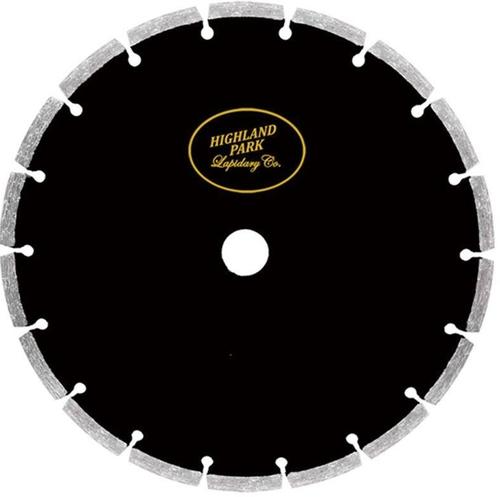Blade tension relates to how straight the blade is. It may affect great blade performance and clean cuts. When the blade starts to wobble it loses tension.
What causes the blade to wobble?
There are several factors that cause a blade to wobble. When you're putting the blade into the machine one of the most important things to consider is it's cleanliness. We should see to it that it's free from raised bumps. It's not misaligned, and the flanges are the same size in diameter so that it doesn't create stress on the steel center due to mismatch of the material being cut.
Here at Highland Park Lapidary, we've got the Highland Park Segmented Diamond Blade, Greeline Agate Eater Blade, and Thinline Agate Slicer Blade.
How do they differ?
Segmented rim blade has gullets (space between the segments) to help cool the blade and extract cutting dust. It offers the roughest cut, and is used when dry and wet cutting.
Highland Park Segmented Diamond blade 
is our version of this, it's used to cut high-end semi-precious gemstones, like agates and jasper.
Notched rim blade has small notches, segments are inserted and pressed to complete the rim. This blade is great because it can perform well in industrial lapidary. Our very own Greenline Agate Eater Blade  is also a notched blade. It has segments that are almost 3/4 of an inch tall and that means it has a long life. It can be use for cutting a lot of agates but not a precision blade, so if you're looking to cut sujilite, charoite, or some expensive agates or jaspers, this is not the blade to use. It has a thicker core, more durable and a great bargain.
is also a notched blade. It has segments that are almost 3/4 of an inch tall and that means it has a long life. It can be use for cutting a lot of agates but not a precision blade, so if you're looking to cut sujilite, charoite, or some expensive agates or jaspers, this is not the blade to use. It has a thicker core, more durable and a great bargain.
Sintered rim blade grinds through materials instead of cutting it. Sintered blades are mainly used for wet cutting to cool out the blade, and to wash out any debris from cutting. Highland Park's ThinLine Agate Slicer Blade  is our version of this, it does a great job in cutting quartz, topaz, glass, and fine agates.
is our version of this, it does a great job in cutting quartz, topaz, glass, and fine agates.
